I have a react component where I collect people's contact information from Google People API after having their permission. I collect the contacts name, email, phone numbers and addresses in an array. Then I pass the array as a prop to the child component. But although the child component apparently receives the prop, the console says its length is zero.
The console output reads like this:

The code where I build the array of objects is like this (I had previously built the whole object, now I just append strings to test if it's working, but I need to pass an array of objects to the component props):
var Elementos = [];
(I call the google api here).then(function (resp) {
var Fila = 0;
resp.result.connections.forEach(list => {
var Contacto = {}
if (list.names != undefined && list.names.length > 0) {
Contacto.Nombre = list.names[0].displayName;
}
if (list.emailAddresses != undefined && list.emailAddresses.length > 0) {
Contacto.Email = list.emailAddresses[0].value;
}
if (list.addresses != undefined && list.addresses.length > 0) {
Contacto.Direccion = list.addresses[0].value;
}
if(list.phoneNumbers != undefined && list.phoneNumbers.length > 0){
var telefonos = "";
list.phoneNumbers.forEach(item=>{
telefonos+=item.value+",";
})
telefonos = telefonos.substring(0, telefonos.length-1);
Contacto.Telefono = telefonos;
}
if (list.names != undefined && list.names.length > 0 && list.emailAddresses != undefined && list.emailAddresses.length > 0 && list.phoneNumbers != undefined && list.phoneNumbers.length > 0) {
Fila++;
Contacto.Numero = Fila;
Elementos.push(Contacto.Nombre +" "+Contacto.Telefono);
}
});
return resp;
})
return datos;
}).then((respuesta) => {
this.setState(prevEstado => {
prevEstado.Contactos = Elementos, prevEstado.DirectorioCargado = true;
return prevEstado});});
Then I pass the properties like this:
return (
<div>
<DirectorioContactos titulo="Directorio de contactos" initialize={this.state.Contactos} />
</div>
)
And finally in the child component I do this (after setting the state in the constructor):
render() {
console.log('en propiedades');
console.log(this.state.Contactos);
console.log(this.state.Contactos.length);
const algo = ["Entonces","Tu","Valiste","Tres kilos"];
return (
<div>
<Jumbotron>
<h2>{this.props.titulo}</h2>
<p>Invita a los contactos que desees. Les enviaremos un correo informando tu decisión de agregarlos a nuestro directorio.</p>
</Jumbotron>
<Table striped bordered condensed hover>
<thead>
<tr>
<th>#</th>
<th>Nombre y Apellidos</th>
<th>Teléfono</th>
<th>Correo electrónico</th>
<th>Dirección</th>
</tr>
</thead>
<tbody>{this.state.Contactos.map((item, i) => {
return(<tr key={i}>
<td>{i}</td>
<td>{item}</td>
<td></td>
<td></td>
<td></td>
</tr>);})
}</tbody>
</Table>
</div>
);
}
But as you can see in the image nothing get's rendered -the line in the console that reads 0 in the image, if you look carefully is the output to a call to console.log(the property.length)-. I also tested the map function and it works correctly when I use the constant value algo like algo.map((item, i).
So my question is ¿what I'm doing wrong? Consider please that I'm new to React, and from what I've read I understand it is possible to pass properties like this, I would even say that I understand it is the purpose of React js.
UPDATE: From the comments I've read (and also what I have read about React js) I really think that I'm missing something that I cannot put into words here: I think it's something about my understanding of what state and props are, because I found the problem begins when I set the Contactosstate. I did this:
.then((respuesta) => {
this.setState({Contactos:Elementos, DirectorioCargado :true
},()=>{
console.log('Después de cargar estado');
console.log(this.state.Contactos);
console.log(this.state.Contactos.length);
});
And from right there it shows there's a length of zero in the array, although the log shows elements in it. For reference, I do this in the constructor of the parent component:
super();
this.state = {
Persona: {
Nombres: '',
ApellidoPaterno: '',
ApellidoMaterno: '',
Telefono: '',
Calle: '',
NumeroExterior: '',
NumeroInterior: '',
Colonia: '',
Localidad: '',
EntidadFederativa: '',
CodigoPostal: '',
Email: '',
Mensaje: '',
RecibeOfertas: false,
InvitaContactos: false,
},
Contactos: [],
DirectorioCargado: false
I ask again, is there a way to correctly set the array property Contactos. Forgive me as I said I'm just starting with React.